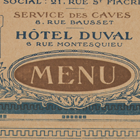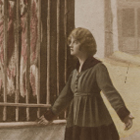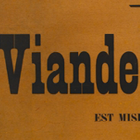Meat
Meat is an example of the food restrictions and other changes made necessary by the war. There were both supply problems and moral problems, and civilians were required to curtail consumption. Restaurant menus were regulated. Beginning in February 1917, restaurant menus could offer only two courses, only one including meat. The next spring, meat vanished from dinner menus and was later only allowed to be served two days a week. Housewives were advised to cook economically, including such dishes as "meat-free roasts"! Livestock and meat products were reserved for those who most needed it —the soldiers at the front. Supplies were low, and price increases eventually led to price controls. To meet demand, the country was compelled to import supplies from abroad, and soldiers and civilians were forced to consume foreign frozen meat that would have been refused in better times.















